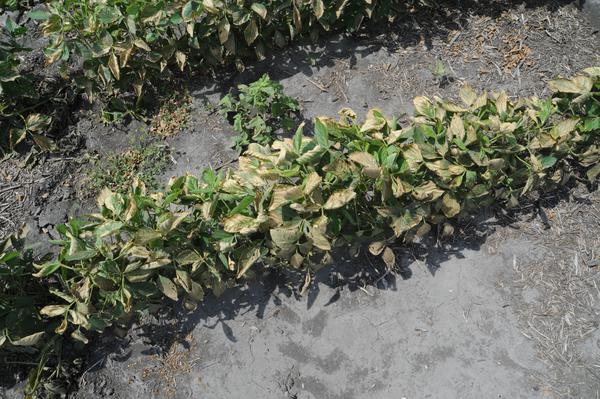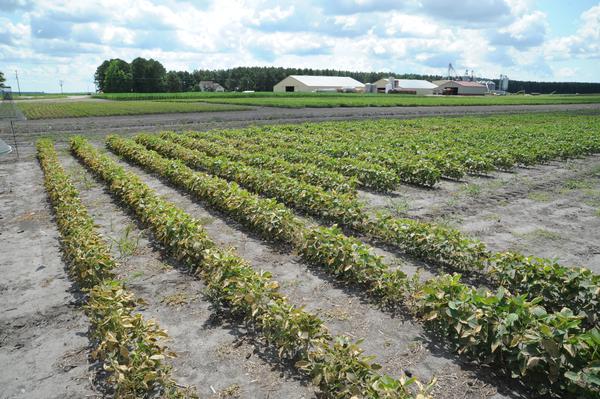Introduction
Fertilizer burn can occur to the soybean seed from an in-furrow application and to the foliage from a foliar application. An in-furrow application can cause salt injury or ammonium toxicity to the soybean seed. Fertilizer is somewhat rarely applied to soybeans over-the-crop, however if it is done fertilizer burn can occur depending on source and concentration.
Symptoms
In-furrow applications of fertilizer in close proximity to the soybean seed can cause burn and ultimately reduce emergence and stand. Dry soils can intensify seedling injury. Foliar applications of certain fertilizers, such as UAN, can cause burning of leaf tissue.
Management
Ensure fertilizer placement does not occur in direct contact with the soybean seed to minimize burn potential and avoid using in-furrow applications under extremely dry conditions where injury is more likely. If soybean foliage is burned from a fertilizer application, the plant can typically recover and long as the majority of leaf area remains unaffected. Use of drop nozzles is one way to minimize crop injury when making foliar fertilizer applications.
Additional Resources
Nutrient Deficiencies and Application Injuries in Field Crops (Iowa State University)
Publication date: Aug. 4, 2020
Reviewed/Revised: Aug. 1, 2025
N.C. Cooperative Extension prohibits discrimination and harassment regardless of age, color, disability, family and marital status, gender identity, national origin, political beliefs, race, religion, sex (including pregnancy), sexual orientation and veteran status.


